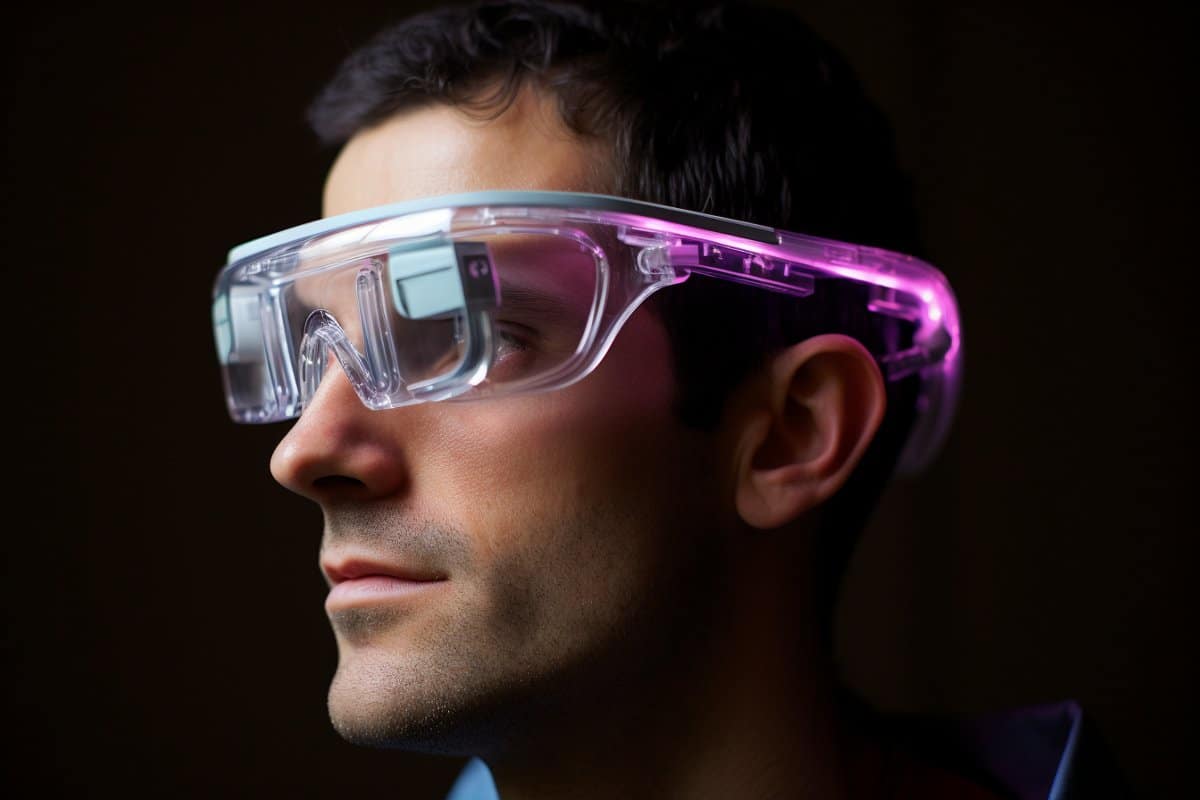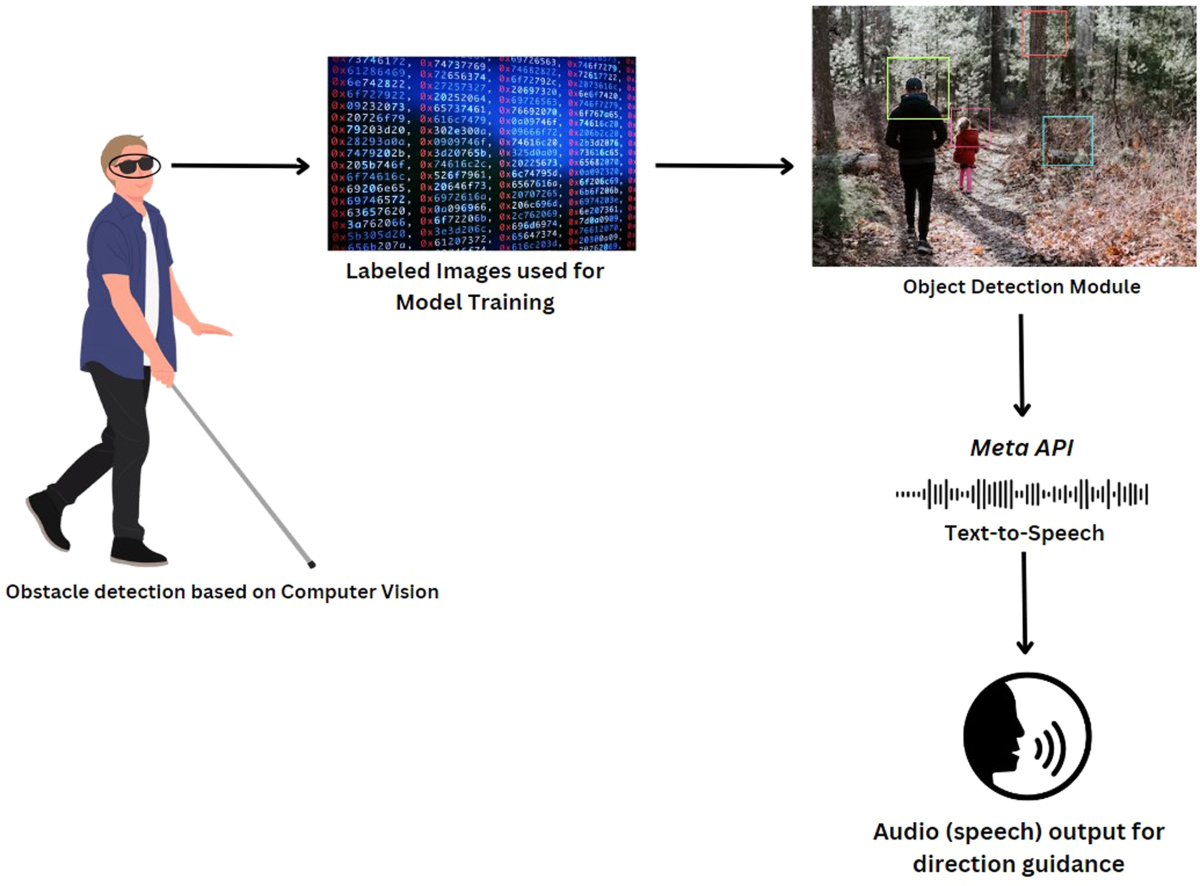AI-Powered Visual Aids: The Next Step in Assistive Technology for the Blind
AI-Powered Visual Aids: The Next Step in Assistive Technology for the Blind
Blog Article
Enhancing Availability With Assistive Technology for the Blind
The assimilation of assistive innovation for the blind represents a pivotal innovation in availability, fundamentally modifying just how individuals browse their environments and involve with society. From display visitors to cutting-edge smart walking canes, these tools not just boost freedom yet also advertise inclusivity in various balls of life. As we discover the diverse kinds of assistive devices and their concrete effect on day-to-day living, it becomes necessary to take a look at just how ongoing technological advancements are improving the landscape of assistance for the blind community. What ramifications do these growths hold for the future of accessibility?
Introduction of Assistive Technology
Assistive innovation describes a series of tools and software made to boost the capacities of people with handicaps, consisting of those that are aesthetically impaired or blind. This technology plays a critical function in promoting self-reliance and enhancing the lifestyle for individuals. By giving alternate techniques for accessing information and executing day-to-day tasks, assistive innovation equips individuals to browse their settings more properly.
The advancement and implementation of assistive modern technology welcome a variety of principles targeted at promoting ease of access. These concepts consist of user-centered layout, which prioritizes the needs and preferences of the person, and the combination of technology into daily activities. Such innovations make sure that assistive devices are not only functional but additionally intuitive and very easy to use.
Moreover, assistive technology includes a varied spectrum of solutions, from low-tech options like magnifiers to sophisticated technologies such as display readers and Braille display screens. The recurring development of this field is driven by the need to attend to the one-of-a-kind obstacles faced by individuals with aesthetic impairments (Wearable technology for low vision). As innovation continues to development, the possibility for enhancing availability and advertising inclusivity continues to be appealing, eventually adding to a much more fair culture

Sorts Of Assistive Tools
Numerous sorts of assistive devices are available to support people that are aesthetically damaged or blind, each designed to deal with certain demands and difficulties. These tools can be generally classified into three main kinds: low-tech, mid-tech, and modern remedies.
Low-tech tools include items such as magnifiers, Braille tags, and responsive maps. These are fairly simple devices that boost the customer's capability to interact with their atmosphere without calling for complicated technology.
Mid-tech gadgets often involve extra advanced attributes, such as digital magnifiers and mobile Braille note-takers. These gadgets can supply performances like speech result, enabling individuals to accessibility info extra successfully.

Effect On Daily Living
The availability of different assistive devices considerably enhances the top quality of life for individuals who are aesthetically impaired or blind, affecting their daily living in extensive means. By incorporating modern technologies such as screen readers, Braille displays, and audio description services right into their regimens, customers acquire better autonomy and self-reliance. These tools help with accessibility to details, allowing people to carry out daily jobs, such as reviewing e-mails, navigating public spaces, and delighting in media web content.
Furthermore, assistive gadgets equip people to involve even more fully in social communications and community activities. The ability to make use of mobile phones geared up with ease of access features enables smooth communication and link with others. This connection fosters a feeling of belonging and lowers sensations of isolation.
In expert settings, assistive innovation supports performance by enabling people to complete job jobs successfully. Devices like voice recognition software application and specialized zoom tools make it possible for users to take part in the labor force on equivalent ground with their sighted peers.

Improvements in Modern Technology
Current technical innovations have actually dramatically changed the landscape of tools offered for individuals who read more are blind or visually impaired. The combination of synthetic intelligence (AI) and artificial intelligence has triggered applications that boost navigating and object acknowledgment. Smart device apps can now use AI to determine and explain surroundings in real-time, giving individuals with important contextual information.
In addition, advancements in haptic modern technology have actually resulted in the development of clever walking sticks equipped with sensing units that spot barriers and provide tactile comments. This empowers customers to navigate their atmosphere with increased confidence and freedom. Moreover, advancements in text-to-speech software program and braille display screens have actually improved the accessibility of digital web content, enabling smooth interaction with numerous media.
Wearable technologies, such as clever glasses, are additionally making strides in assisting visual impairment. As innovation proceeds to advance, the possibility for also more transformative devices continues to be on the perspective.
Future Trends and Innovations
As innovation rapidly proceeds, the future of assistive tools for individuals that are blind holds immense promise. Technologies in expert system (AI) and artificial intelligence are poised to reinvent the means blind individuals interact with their atmospheres. For example, AI-driven applications are being established to boost item acknowledgment, enabling customers to identify and browse their environments with higher simplicity and accuracy.
In addition, advancements in haptic comments innovation are enabling the production of responsive maps and navigation aids that give real-time information through touch. These advancements not only enhance movement yet also foster independence. Furthermore, wearable tools outfitted with augmented truth (AR) attributes are emerging, offering individuals aesthetic details through audio summaries, therefore linking the gap in between the electronic and physical worlds.
Moreover, the assimilation of clever home modern technology presents new opportunities for access, allowing people to control their living environments through voice commands or smartphone applications. As collaboration between tech developers and the blind community continues, the focus on user-centered design will ensure that future developments are tailored to meet the distinct needs of this population (Wearable technology for low vision). The trajectory of assistive modern technology assures an extra empowering and comprehensive future for individuals who are blind
Conclusion
In verdict, assistive innovation plays a crucial function in enhancing availability for individuals with aesthetic impairments. Constant developments in modern technology and user-centered design ensure that these tools provide effectively to the one-of-a-kind needs of the blind navigate to this website community.
The assimilation of assistive innovation for the blind stands for a critical innovation in accessibility, essentially modifying how people browse their environments and involve with culture.Assistive technology refers to a variety of tools and software made to improve the capacities of individuals with impairments, consisting of those that are blind or aesthetically damaged. Wearable technology for low vision.As modern technology rapidly advances, the future of assistive site web devices for people that are blind holds immense guarantee. The trajectory of assistive innovation guarantees an extra empowering and comprehensive future for people who are blind
In final thought, assistive modern technology plays an important duty in boosting accessibility for individuals with visual impairments.
Report this page